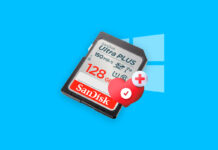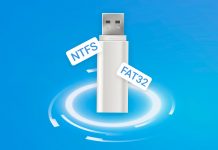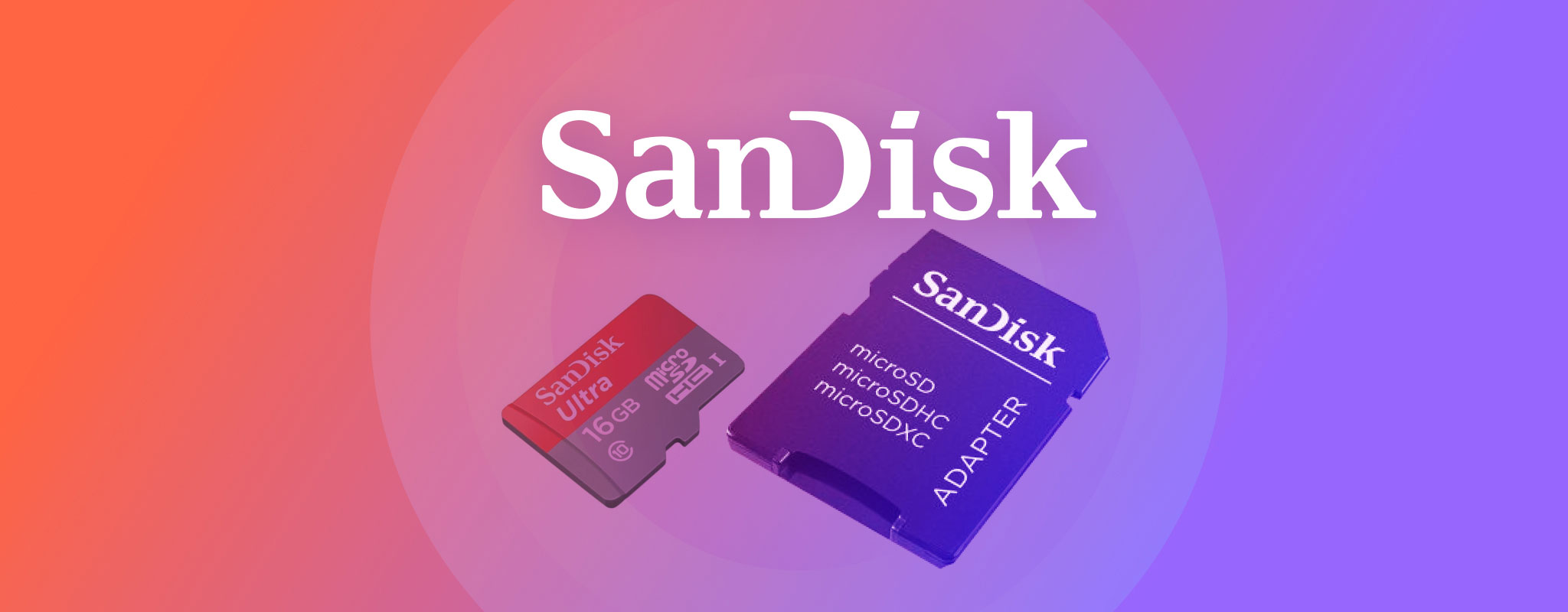
SanDisk is one of the most popular manufacturers of flash memory products, mainly SD cards and USB drives. But just because SanDisk products can be found in stores around the world doesn’t mean they’re 100% reliable, which is why SanDisk recovery is a topic that’s commonly discussed in forums on the internet.
Table of Contents
What Causes Data Loss on SanDisk Devices
Because of how SanDisk storage devices are used, their users typically need to perform data recovery for one of the following reasons:
| Reason | Description |
| 🚑 Accidental deletion | Even the most experienced users make mistakes, and it really doesn’t take much to accidentally delete the wrong file. |
| ✂️ Data corruption | When transferring memory cards and USB flash drives between devices, data corruption may occur and cause files and even entire folders to become inaccessible. |
| 🪓 Physical damage | While SanDisk storage devices are known to be reliable, they are certainly not bullet-proof, and damaging them is not that difficult. |
In the first two cases, it’s possible to use readily available SanDisk recovery software to get back the lost files in a matter of minutes. Such software can be downloaded for free from the internet, and it works with all SanDisk storage devices regardless of when they were manufactured.
Unfortunately, even the best SanDisk data recovery software can’t restore files from physically damaged storage devices that are no longer accessible. In that case, it’s necessary to contact a special data recovery service center with professional equipment and plenty of experience.
Best SanDisk Recovery Tool
To perform SanDisk file recovery, you need to do two things: connect your SanDisk storage device to your computer and download a SanDisk recovery tool. The former shouldn’t be a problem as long as you have a memory card reader and an empty USB port, but the latter can be a challenge because there are many options to choose from.
We declare Disk Drill as the best SanDisk recovery tool for its reliable and consistent data recovery performance. With Disk Drill, even complete beginners can achieve fantastic results in just a few clicks. Thanks to its deep scanning set of algorithms, it can locate lost files and reconstruct those with incomplete metadata.
Disk Drill is capable of handling all commonly known file systems like FAT32 and exFAT, which are used by SanDisk storage devices. Even if your device is corrupted or formatted, you can trust Disk Drill to recover your data effectively. Moreover, it offers additional features, such as backup tools, allowing you to safely clone a failing storage device before scanning.
Disk Drill is available for both Windows and MacOS, with Disk Drill Windows giving up to 500 MB of data you can recover.
Whether you are using Windows or MacOS, the process of SanDisk recovery should follow virtually the same steps. Here’s how to recover your files using Disk Drill:
- Download the Disk Drill installer program and run the setup. Then, follow the installation steps to install Disk Drill on your computer.
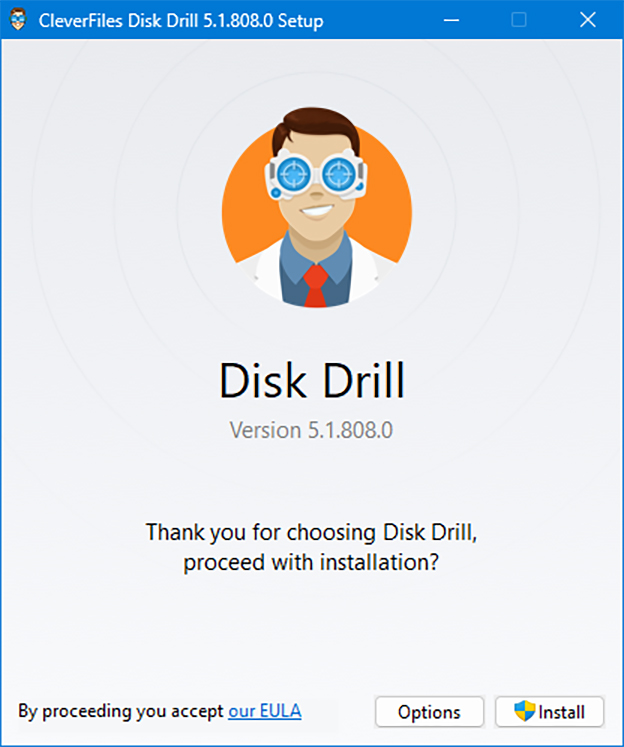
- Launch the Disk Drill app. In the main window, you should see the list of devices available. Choose your SanDisk storage device and click Search for lost data.

- You can either view the files that Disk Drill has scanned so far or wait for the scan to finish first. Browse the files by clicking Review found items.
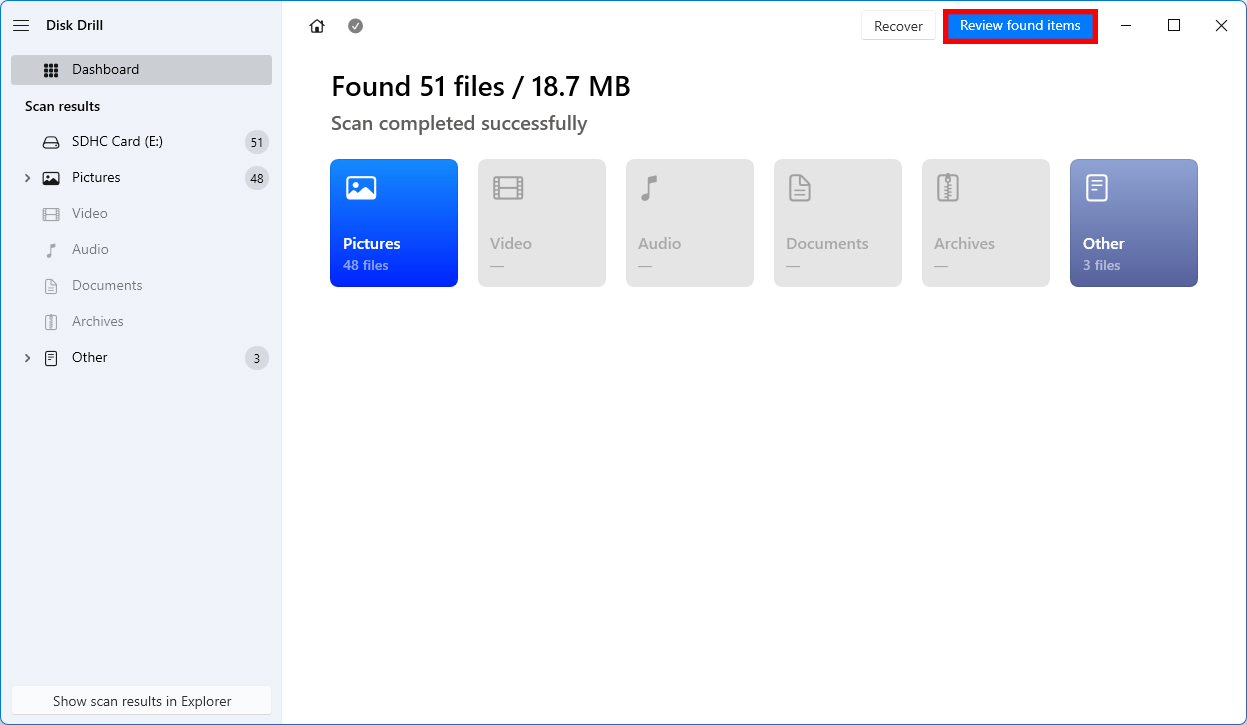
- Select all the files you want to recover and click Recover.
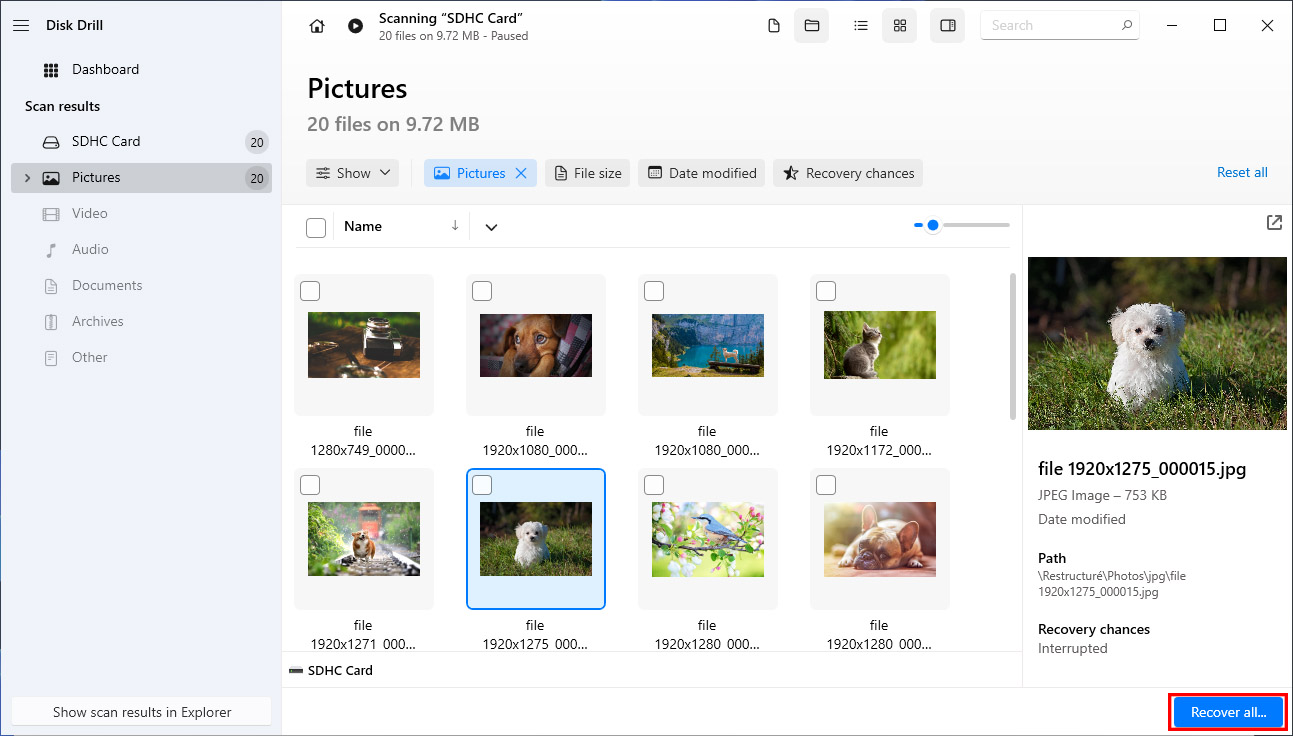
- After that, choose the file destination for your recovered files. Then, click Next to begin the data recovery process.

- After data recovery is complete, Disk Drill will provide you with the results and give you the option to browse your files in File Explorer by clicking Show recovered data in Explorer.
Other Tools to Consider
While Disk Drill offers a solid set of features and data recovery capabilities, there is a limit on how much data you can recover without paying. Depending on your needs and budgets, you might want to explore alternative data recovery tools that offer a wide range of recovery options, among other set of features.
Here are some other Sandisk recovery apps you can choose from:
1. PhotoRec (Windows, Mac & Linux)
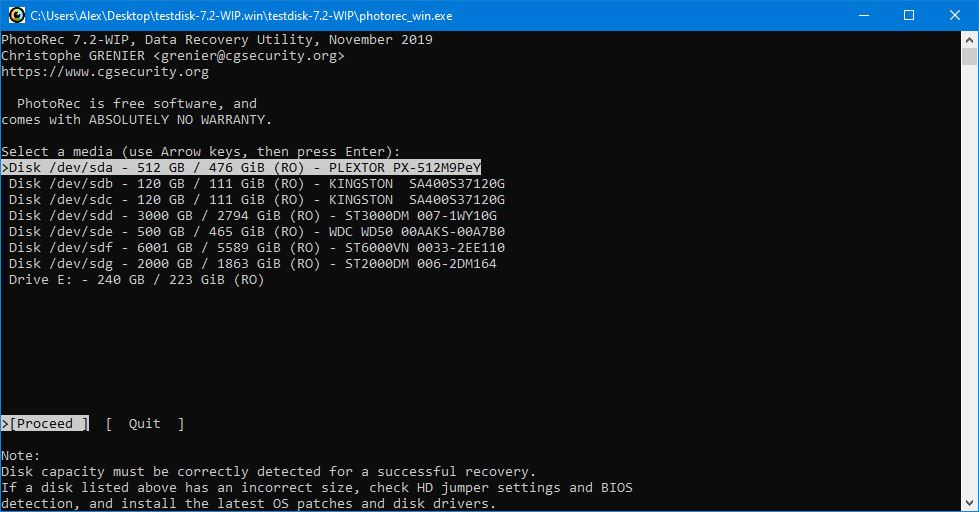
We recommend PhotoRec because it runs on all major operating systems and offers unlimited recovery for free. Despite what its name suggests, PhotoRec can be used to perform more than just photo recovery and image recovery thanks to its support for all commonly used file formats.
Pros
- Open-source
- Multi-platform
- Support for many file systems and file formats
- Unlimited recovery
Cons
- Command-line only
- Not suitable for beginners
2. Data Rescue (Windows & Mac)
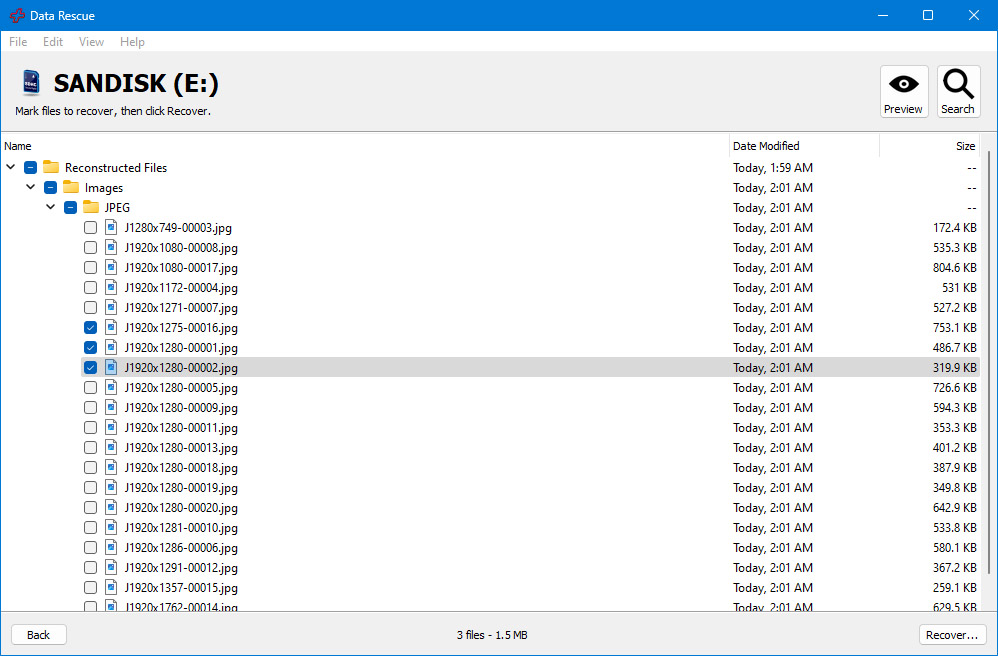
Data Rescue is a no-frills recovery tool for Windows and Mac that boasts a straightforward recovery process and a bunch of extra features that greatly increase its value. We just wish it were a bit more modern because it pales in comparison with Disk Drill and other leading recovery tools.
Pros
- Finds all your lost files for free
- Straightforward recovery process
- Can clone a failing storage device
Cons
- Doesn’t offer free recovery
- Relatively expensive
- Outdated user interface
- Preview only in HEX format
3. RescuePRO and RescuePRO Deluxe (Windows & Mac)

As with various other brands of storage media, SanDisk has its own proprietary data recovery programs called RescuePRO and RescuePRO Deluxe. It’s a bit on the pricey side, but it works on both Windows and Mac machines, it’s great at recovering fragmented video files, and it includes extra backup and wiping features. Keep in mind, however, that the apps don’t work with hard drives or RAID setups, so only pick it up with that in mind.
Pros
- Supports a wide range of file formats
- Includes backup and secure deletion features
- Capable of recovering damaged and fragmented video files
- The price tag is heftier than a lot of its rivals
- Scanning process is rather slow
- Only good for mobile storage devices
4. R-Studio (Windows, Mac & Linux)

R-Studio is an incredibly comprehensive data recovery tool that’s geared more towards advanced users than newbies. While the program may be a bit too complex for some, in the right hands, R-Studio provides a level of flexibility that most of its competition doesn’t have and it comes with an overwhelming number of features for an impressive range of storage mediums, file systems, and file types. If you can get past the odd pricing scheme, that is.
Pros
- Chock-full of features
- Offers complete control over the recovery process
- Available on a variety of platforms
- Can be overly complex for novice users
- The pricing structure feels needlessly complicated
5. AnyRecover (Windows, MacOS, Android, and iOS)

AnyRecover has everything you would need from a SanDisk recovery tool. It works with the most common storage devices (USB drives, SD cards, HDDs, SSDs, and many more). It supports 1000+ file formats, including deleted pictures, videos, and documents. It boasts data recovery capabilities tested under 500+ data loss scenarios, such as accidental deletion, formatting, lost partition, virus infection, and many others. On top of all that, it’s reasonably priced for all that it’s giving in turn.
Pros
- Intuitive user interface
- Access to all its features even with the free trial version
- Limited data recovery on its free version
- Windows and Mac versions are purchased separately
6. Recuva (Windows)
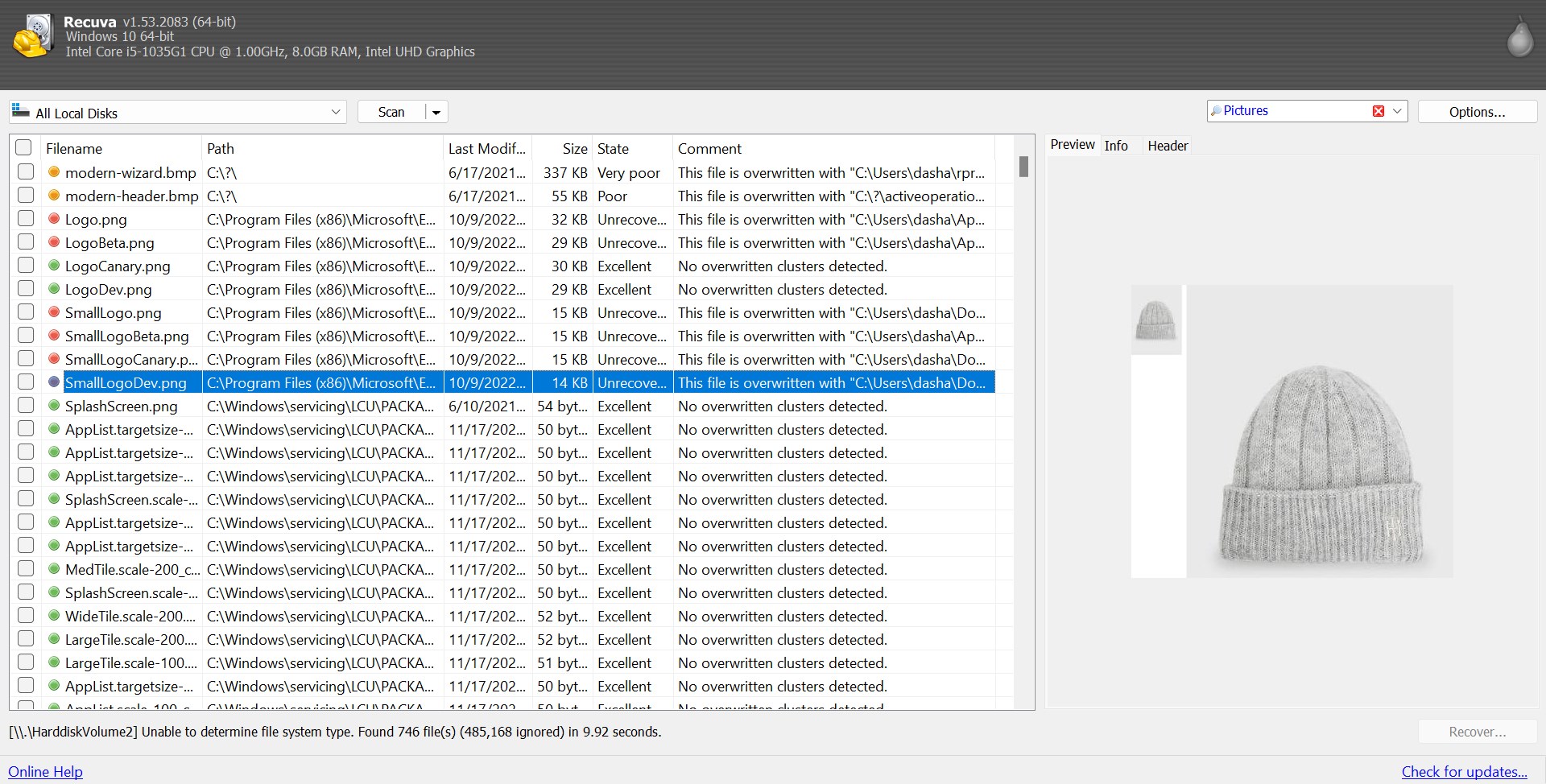
If you’re looking for a data recovery solution that won’t hog much of your machine’s resources and comes with an attractive free version, then Recuva is certainly worth a look. The free edition allows you to recover files without limits, which is fantastic, and the paid version is quite affordable in case you’re interested in some of the extra features. It’s not the most effective recovery tool on the market and the user interface could use a much-needed facelift, but Recuva is one of the better free/low-cost solutions out there.
Pros
- Reasonably priced
- Lightweight and low profile
- Solid free version
- Recovery rate is not as high as some of the competition
- Outdated visuals
Tip: Back Up Your SanDisk Storage Devices
SanDisk is known for offering a comprehensive warranty on its products, but there are certain limitations that you should know about:
“SanDisk warranty does NOT provide reimbursement for data recovery services. This is specifically stated in our warranty,” states SanDisk on its website. “The SanDisk warranty covers the product itself, but does NOT cover any damages due to data loss. It is recommended to make regular backups of all your data and pictures.”
That’s right, SanDisk won’t pay for data recovery services in case you lose important files to physical damage and are forced to seek the assistance of professionals. That’s why you should regularly back up your data, and you can do so using SanDisk’s own backup software, called simply SanDisk Backup.
To backup your SanDisk storage device with SanDisk Backup:
- Download the SanDisk Backup software application.
- Unzip it and launch it.
- Install it on your SanDisk storage device.
- Create a new backup.
- Click Launch Backup to start.
Conclusion
While there are tons of trustworthy data recovery tools available online, our best bet is using Disk Drill for SanDisk data recovery.
Be it accidental deletion or data corruption, Disk Drill’s powerful scanning algorithms can give you a great chance to restore files from SanDisk storage devices like USB drives and SD cards.
That said, prevention is still better than cure, so remember to back up your SanDisk storage regularly to prevent data loss in the future.
